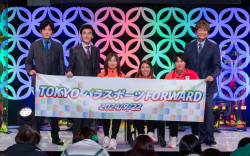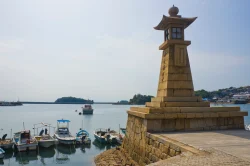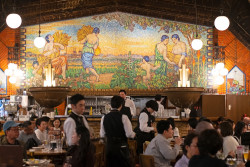
May 19, 2011
Sound Waves
Multi-talented Japanese-American singer Shanti takes a peaceful look at her future
By Metropolis
Originally published on metropolis.co.jp on May 2011

NIPPON COLUMBIA
Shanti, who turns 30 in June, was born in Zushi, Kanagawa. “I always had a big passion for the fine arts. I did modern ballet and contemporary dancing for about 10 years,” she recalls. “A lot of my dad’s musician friends wanted me to do music and invited me to make demos for fun. That’s when I realized I loved singing and wanted to do it for the rest of my life. I got into gospel music when I started taking vocal lessons at 16, and began listening to lots of R&B music, soul and jazz.”
Shanti—whose name means “peaceful” in Sanskrit—decided to follow her father’s advice. “He said the best way to learn was to be inspired by great musicians, writers and arrangers.” Over the years, she has collaborated with such artists as Keisuke Kuwata, Yoko Kanno, and Hajime Yoshizawa. Her jingles include ads for Ajinomoto, Uniqlo and Shiseido, and she has written two songs for Mount Rainer’s Caffe Latte TV campaign, one featuring actress Scarlet Johannsson. For 18 months, she also co-hosted NHK World’s music program J-Melo.
Shanti has released three albums to date: Share My Air (2008), Born to Sing (2010) and Romance With Me (in January this year). “As a studio musician, I sang all sorts of genres, from bossa nova to rock,” she says. “I realized I was more comfortable singing in English because it’s a more emotional language.” She describes her music as jazzy pop with a soul and R&B influence. “I’m working with a Brazilian percussionist, a keyboard player whose background is Chinese and American-Indian, an African-American bass player and drummer, and a Japanese guitarist.”
Any advice for aspiring artists? “First, make a CD with two or three songs of your best performances,” she says. “Do live shows and see how the audience responds. There are a lot of venues for non-professional musicians. Japan is really good for that. The important thing is to have a great passion to continue, whatever the response. It takes time to flower as an artist; some do it in their 30s, others in their teens. Believe in yourself.”
When not performing, Shanti heads to Hayama beach. “I like to listen to the waves and wind,” she says. She hasn’t had much of a chance to travel abroad recently. “I always get this urge to leave to a culturally different environment. In June, I’ll be going to France to perform at Japan Expo and the Japan Cultural Center. I’ll be singing in three languages.”
Shanti hopes to be around for a long time. “There’s a great album by Shirley Horn, Here’s to Life, and another by Joni Mitchell called Both Sides Now—orchestrated jazz with a lot of pop and folk. That’s where I want to be when I’m 50.”
- For details of Shanti’s schedule, visit http://columbia.jp/shanti/info.html
- Chris Betros is the editor of Japan Today







